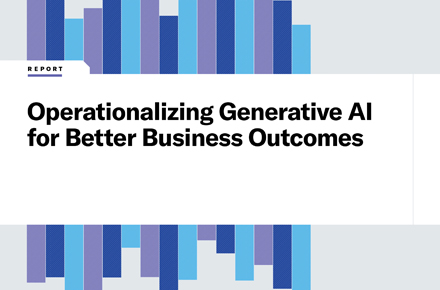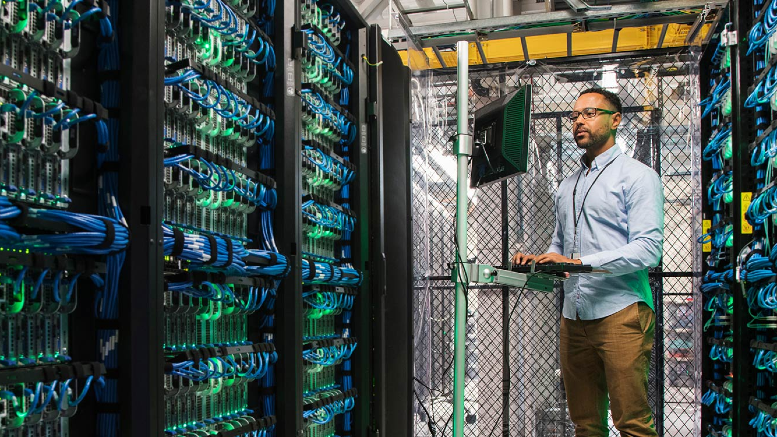How to Drive Engaged Productivity in the Post-Pandemic World
juin 15, 2021 / Weston Morris
100 years ago, the Industrial Revolution caused a mass migration of workers from farms and homes to the factory and office. In 2020, the world experienced an even greater mass migration of workers – but in the opposite direction – as the COVID-19 pandemic forced 92% of the working population to migrate back from the office to work at home. (That’s an 85% increase in the span of a month.) Looking beyond the pandemic, our research reveals that 69% of businesses expect to move to a “hybrid office” with work being performed both at home and in a physical office. Why? Interestingly, 53% expect this to improve productivity and 57% expect this to improve worker experience.
But will the hybrid office automatically improve worker productivity and experience?
Early in the pandemic, reports hinted that productivity might be increasing as home-based employees worked up to 40% longer than they did in the office. However, more recent reports call into question whether this increased working time is sustainable, or even if this increase in work time translated to an actual increase in productivity. Furthermore, our research shows a gap in ‘experience parity’ across industries, geographies, and generations of workers. This article gives a glimpse into research on productivity and experience that Unisys and ISG published in a recent eBook.
To learn more about how to drive engaged productivity in the post-pandemic world, read our eBook.
What COVID-19 Taught Us about Resiliency
The word “resiliency” conjures up the idea of being ready to adapt to, fend off and recover from changes in the market, political instability, or natural disasters. COVID-19 revealed another aspect of resiliency – how quickly can our people adapt to new working models in order to keep our businesses operational.
What factors contributed to the best resiliency?
-
- Organizations that had diversified product offerings—or were able to adapt quickly to digital models—had the best chance of survival.
- Businesses that were able to seamlessly make the digital migration actually grew during this period.
- In contrast, companies that were hit the hardest were those who attempting to achieve efficiency by operating at the minimum levels of human capital, which made their supply chains complex and more fragile.
This isn’t a jab at efficiency, since running lean is an important aspect of profitability. The problem for these businesses was how their focus on efficiency limited their resiliency. Before 2020, the very thought of a single disaster causing the entire world to shut down wasn’t even conceivable. But now that we’re on this side of it, businesses realize the need to think about workforce resiliency.
Pandemic Fallout: Beginning of the End—Or End of the Beginning?
After some initial struggles, the dust settled fairly quickly for many workers as they adapted to this “new normal.” In fact, almost half of the workers we surveyed say that they want to continue to work from home, at least part time, for the foreseeable future. Achieving this level of experience marked the beginning of the end of the pandemic. A silver lining in an otherwise dark cloud.
For company owners and corporations, however, the fallout is just beginning. What liability does a company have if an employee is injured in their home office? How will corporate real estate be used as workers return to a physical office? Many are still paying leases on expensive office spaces that have gone unused for months. Businesses often hold these leases for several years, so not using them is an unacceptable expense. Plus, with the widespread availability of vaccinations, 31% of businesses that we surveyed hope to return to the “old normal.”
As Winston Churchill aptly said after a key battle in the middle of World War II, “This is not the end. It is not even the beginning of the end. But it is, perhaps the end of the beginning.”
If that is true, what should business be doing now to prepare for post-pandemic success?
Conclusion: Glimpsing the Future Workforce
In almost every aspect of our research, we find a 10-15% gap between the work model that businesses expect to provide vs. what employees actually want. It is essential for businesses to understand this gap in expectations as the post-pandemic economy heats up and as the job market tightens.
Sustained improvements in productivity can only take place if business invests in understanding and managing worker experience. Sentiment analysis is a useful tool in evaluating employee experience. The first step is to collect worker sentiment, which can start with simple surveys and progress to AI-based evaluations of worker interactions with IT. The next step is to make use of that sentiment analysis in evaluating the effectiveness of the workplace and then to make changes based on the data.
Understanding and managing worker experience will become increasingly important – not just because of the pandemic, but because of the constant change in workplace technology that we are experiencing. Just as we all adapted to Zoom calls and Teams meetings, we’ll soon routinely interact with AI-powered assistants to streamline common business processes and manage monotonous meeting tasks. We’ll use virtual reality headsets to attend meetings “in person” with coworkers around the world. The future workforce will put different generations of workers under a single virtual roof, in a digital environment that makes it simpler for all employees to work smarter, faster, from anywhere and at any time.
For more great insights and detailed research about what the pandemic taught us about the future of work, read the full eBook from Unisys and ISG.




















